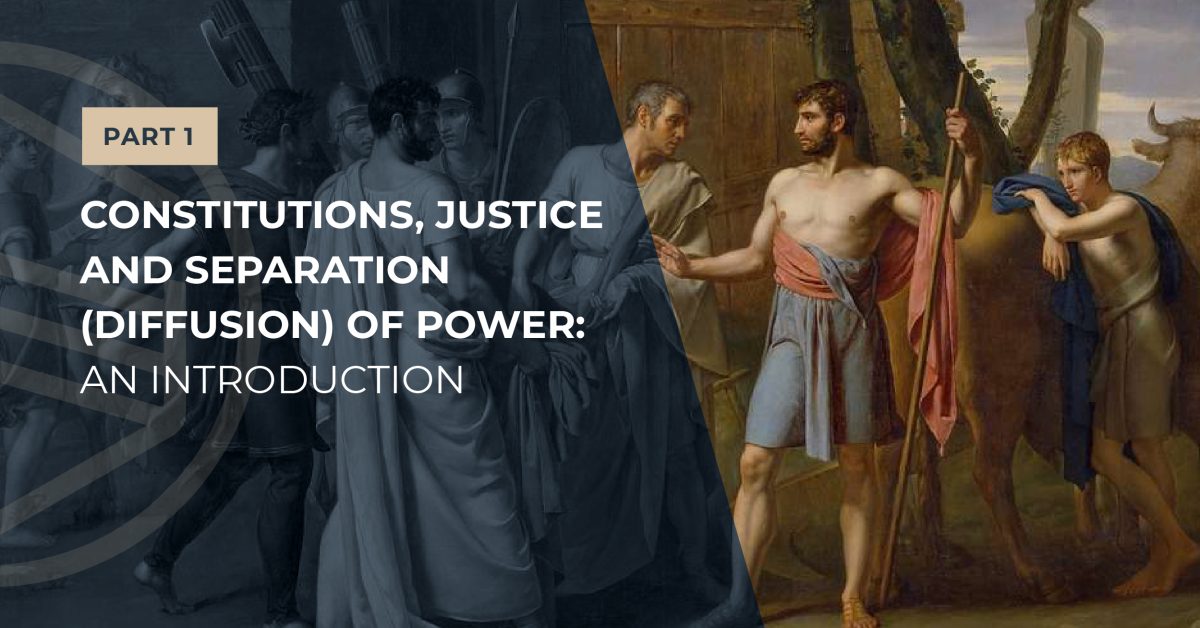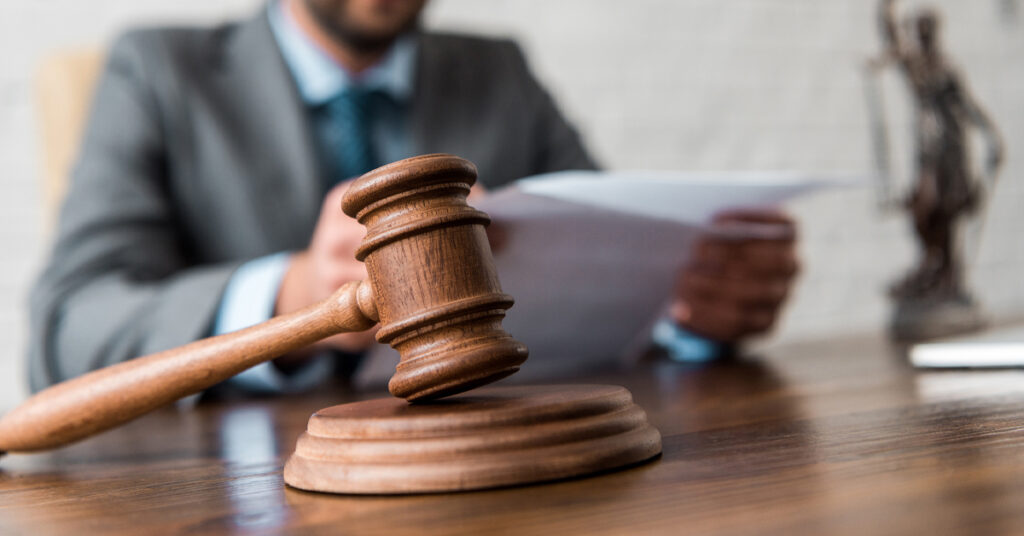
What is the purpose of a constitution, specifically the constitution of a state? To protect individual rights, many people might answer. The answer is not without merit, but it falls short, nonetheless.
Justice
A more accurate answer is that a constitution should serve as a guarantee of justice. Individual rights are part of it. But alongside justice for individuals, a constitution must also uphold justice for communities. In fact, situations often arise where justice for communities takes precedence over justice for individuals, as justice for individuals is usually impossible without justice for communities.
The primary way to ensure justice for individuals is through the recognition of basic individual freedoms. This, of course, is not sufficient on its own. Moreover, there cannot be unrestricted individual freedom.
The primary way to achieve justice for communities is similar. It is through the recognition of the authority of communities to govern themselves. More attention will be given to this in later discussions.
Division of Government Powers – Checks and Balances
However, governments often do not act in a way that upholds justice for individuals and communities. The moral and legal duty of a government to justice is thus inadequate. Therefore, it is convincingly argued that a constitution must contain a broad catalogue of individual rights (in a bill of rights), primarily aimed at safeguarding individual liberties against government coercion and intrusion. This is good, but far from sufficient, because to maintain justice, any form of governmental power must be balanced with counteracting power to prevent abuse of power.
A constitution must, therefore, include appropriate arrangements for the exercise of governmental power and authority, which provide for control over governmental power. This involves identifying the institutions in which certain aspects of government power and authority reside; allocating specific powers and authority to these institutions; outlining how powers and authority should be exercised; and providing for oversight – control and supervision – of the exercise of power and authority by these different centres. The latter is usually referred to as checks and balances. This is done to ensure that government institutions stay within their limits, do not abuse their power, and govern in the interest of the whole of the citizenry rather than just certain sectors, thus maintaining justice.
Separation of governmental powers (and authority) along with checks and balances is essential for all constitutions because when all power and authority are concentrated unchecked in a single institution, there is a risk of abuse of power and the resulting decline of justice.
The allocation of government power and authority involves the division of powers or the so-called separation of powers. When we talk about this, the separation between the legislature, executive, and the judiciary (trias politica) immediately comes to mind. This is a classic feature of modern constitutional law.
Often it is argued that the separation of powers is an integral part of a democratic constitution. This is not correct. The division of powers predates modern democratic constitutions. In the Western constitutional tradition, the division of power dates back to our classical Roman and Greek roots. However, it is more specifically to the formalization of the separation between the power of secular authorities and the authority of the church in the eleventh century that our contemporary views and practices originated, several centuries before modern democratic constitutions.
As we will see in later discussions, the most important mechanisms for limiting power are not primarily the institutions referred to in constitutions. On the contrary, the most important institutions that uphold constitutionalism, defend rights, and maintain power balance are institutions such as the business sector, professions, educational institutions, religious institutions, and other institutions of civil society.
Unlimited democracy is not in keeping with the constitutional idea of the division of powers and checks and balances. Unbridled democracy allows free rein to the power (sovereignty) of the people, which, in practice, means the majority. When not properly constrained, it can lead to serious abuses against those who do not share the convictions of the majority.
On the other hand, constitutionalism often requires that the power of the majority be restrained. A commitment to the constitutional idea involving justice and checks and balances often requires that democracy, in the guise of the will of the majority, must be limited. In later discussions, we will delve further into democracy.
Power and authority (Potestas and Auctoritas)
Here the concepts of power and authority are used. This is not without reason, as they do not mean the same thing.
The first branch of power is the legislature, which acts in a law-making, that is, legislative capacity, making legislation. However, the legislature does not have the ability to execute the law it has created through legislation. The executive function lies with the executive authority (executive).
This, on close analysis this is the branch of state power vested with actual power. In South Africa, the president, and ministers, who are the political heads of relevant organs of state have the competence to apply/enforce legislation effectively, as well as not only make executive decisions but also carry them out. The power of the executive specifically includes the ability to exercise force, including the to use (regulated) violence. The police and the military are the most striking examples of actual (executive) power.
The judiciary, which vests in the courts, on close analysis has no power at all. At best, they have authority. The judiciary (the judges) should come from the ranks of the most senior stratum of the legal profession. Their authority derives from their seniority and impeccable reputation in the legal profession. Furthermore, they owe their authority to the exercise of impartial justice, their erudition, and rational reasoning. This should secure them such high esteem that their judgments and orders, even orders against the executive, are voluntarily obeyed by the executive. If they are not drawn from the most senior ranks of the legal profession, are intellectually deficient, reason poorly or are biased, or if they involve themselves in political controversies, they forfeit their authority, causing the decline of the judiciary.
Since the courts have no power and no executive ability in the guise of something like a police force or military, they rely on the executive authority to enforce their orders. If the executive authority is hesitant slow or unwilling to do so, there is ultimately nothing the courts can do about it. In such circumstances, the court can only hope that the legislature and the public will hold the courts in such high esteem that they will exert pressure on the executive authority to assist the courts. Without this, the court’s orders are not truly orders, but mere requests or wishes. Ultimately, the courts are dependent – especially dependent on the executive – as well as on the public and, in reality, powerless.
Besides power and authority, there is also a third concept that is of great importance for maintaining a proper constitutional order. This is property (dominium). As we shall see later in the discussion of this subject, property is not only a very important private law right. It is also central to constitutional law. Without the right to property, the maintenance of a proper constitutional order is out of the question.
Other levels and spheres of government
Power can, of course, also be further divided in the case of various levels or spheres of government, as in the case of South Africa, where there are provincial and local governments. There are good reasons for this, as it brings government closer to the public, as the saying goes, and therefore more democratic. Furthermore, it is commendable because it contributes to further dispersing power rather than centralizing it in the (single) national government.
Empowered civil society and business sector
Civil society and the business communities usually do not officially occupy an important position as structures of a constitutional order and do not feature in express terms in a constitutional document. Nevertheless, the organized civil society and the organized business sector play multiple roles in a constitutional order and indeed also have significant power and authority, especially in a declining order like present-day South Africa. These sectors must, therefore, be an important item in any discussion about a constitutional order and are becoming increasingly important every day. We will indeed address them in later discussions.
Discussions
In subsequent discussions, we will practically elaborate on various constitutional issues, especially concerning the South African public and constitutional dispensation. This includes questions about whether the national legislature, especially the national assembly, effectively exercises control over the executive; whether the courts and bodies such as the public protector and other so-called chapter IX institutions succeed exercising effective oversight; to what extent provincial and local governments genuinely promote democratic government in South Africa and act as a check and balance against the national government; the role of civil and business communities in promoting justice, exercising checks and balances, and preserving the balance of power. We will also look at democracy and address the question of the quality of South Africa’s democracy. Then issues such as public office-bearing, equality and property rights and various other rights will also be covered.
We will not only identify problems. On the contrary, we will also explain how gaps can be filled and weaknesses corrected, as well as how the public, including business and civic organizations, can play a significant part in this regard.
We will also examine how constitutional orders change, not just through amendments to constitutional provisions, but simply by establishing new practices, decay of constitutional institutions, the rise of new non-state institutions, and the shift of power and authority from one dominant elite to another and from one institution to another.
SHARE THIS ARTICLE
BE THE FIRST TO:

Constitutions, Justice and separation (diffusion) of Power: Checks and Balances and the Dominant Power Elite
MORE ARTICLES BY PROF. KOOS MALAN

Build a state-proof future for business

Protecting Businesses and Ensuring Reliable Power Supply

Strategic Litigation
Our litigation stops state decay and harmful interference where possible, and buys time for building alternatives where necessary.
Newsletter subscribers receive breaking updates on litigation, case highlights, as well as analysis and commentary on key events affecting economic and businesses environment. You also get access to surveys and Sakeliga events.
